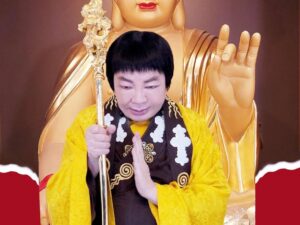B37-Master Dolpopa (1292-1361)
- Description
- Curriculum
- Reviews

Master Dolpopa Sherab Gyaltsen (1292-1361) is a Buddhist patriarch of the Tibetan Jonang school. This biographical course begins by telling the life story of “omniscient” Dolpopa. His life story is then used to introduce students to one of Shakyamuni Buddha’s foremost philosophical tenets, called other-emptiness (Tib. shentong). Other-emptiness concerns the nature of reality. It was Dolpopa’s greatest legacy, but caused controversy among Tibetan Buddhists that has left its mark on the Jonang school even to the present day.
The image above is part of a thangkha depicting Jonang lama Dolpopa Sherab Gyaltsen. He is chiefly known for recognizing, naming and authoritatively documenting other-emptiness. He also convincingly demonstrated how other-emptiness together with self-emptiness (Tib. rangtong) give a coherent description of ultimate truth as experienced by Buddhist practitioners. Dolpopa called this synthesis Great Madhyamaka, a tribute to Nagarjuna’s (150-250 CE) Madhyamaka (Middle Way) philosophy of self-emptiness.
“The Buddha from Dolpo” by Cyrus Stearns (Snow Lion, 2010) is the required text for this course. All page references are to that edition.
This interactive course is not available for those enrolled in the free membership program for AUDITING STUDENTS. It is only part of the paid membership program.
Click on the “Curriculum” tab to review this course. If you have not registered for a membership, please click on “Membership” on the top menu bar to select your membership and enroll in this course. You are also required to complete the application form provided in course “G02-Spiritual Autobiography” prior to being admitted to either the BUDDHIST STUDIES or the XIUXING SEMINARY PROGRAMS and complete D35(A)-Buddhism for Beginners, The 128 Evil and Erroneous Views, a prerequisite for all biographies, and use those views to evaluate the text. You need to also review the chart in G03(A) showing the evolution of Buddhism to see how this patriarch fits into the overall structure of Buddhism in the world.
Click for detailed Users Guide under the “STUDENT MANUAL” in the website’s top menu bar for more information.
Prerequisites: G02, G03(A), and D35(A)-128 Evil and Erroneous Views.




